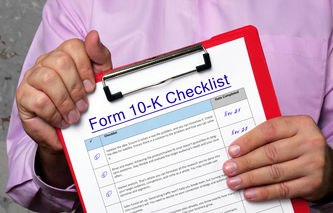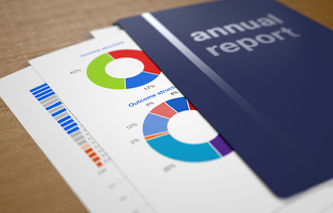Definition
The term Form 8-K refers to a report that summarizes material events that may be of importance to the Securities and Exchange Commission or investors. The Form 8-K is used to describe a number of material events as they occur. Regulations require companies to file this report with the Securities and Exchange Commission within four days of the event.
Explanation
Publicly-traded companies are required by federal securities laws to disclose certain operating and financial information on an ongoing basis. Form 8-K fulfills this ongoing disclosure gap when material events occur between a company's Form 10-K (annual) and Form 10-Q (quarterly) filings.
Companies are required to file Form 8-K with the Securities and Exchange Commission (SEC) within four days of what are termed material events. Shareholders are encouraged to read through these disclosures, since the information contained therein can affect the company's price per share. The SEC groups this information into the following categories:
Registrant's Business and Operations: includes entry and termination of definitive agreements, bankruptcies, and receiverships.
Financial Information: includes acquisition or disposal of assets, creation of financial obligations, off-balance sheet arrangements, disposal activities, and material impairments.
Securities and Trading: includes delisting, unregistered sales of securities, and modifications to the rights of security holders.
Accountants and Financial Statements: includes changes in certifying accountant, non-reliance on previously issued financial statements or audit reports of previously disclosed information.
Corporate Governance: includes changes in registrant control, departure or election of officers and directors, compensation of certain officers, amendments to bylaws, suspension of trading under an employee benefits plan, items to be voted on by shareholders, as well as a change in the registrant's code of ethics.
Asset-Backed Securities: includes information and computational materials, change in trustee or external support, and failure to make a distribution.
Financial Statements and Exhibits: material changes to previously issued financial statements and supporting exhibits.
While the above require companies to file an 8-K report with the SEC within four days, companies are also required to file this form as part of their Regulation FD (fair disclosure) obligation, in addition to any other information deemed by the company to be of importance to holders of their securities.
The information found in a Form 8-K typically includes the name of the event, as well as supporting information. This can include financial statements, event descriptions, backup materials as well as press releases.










